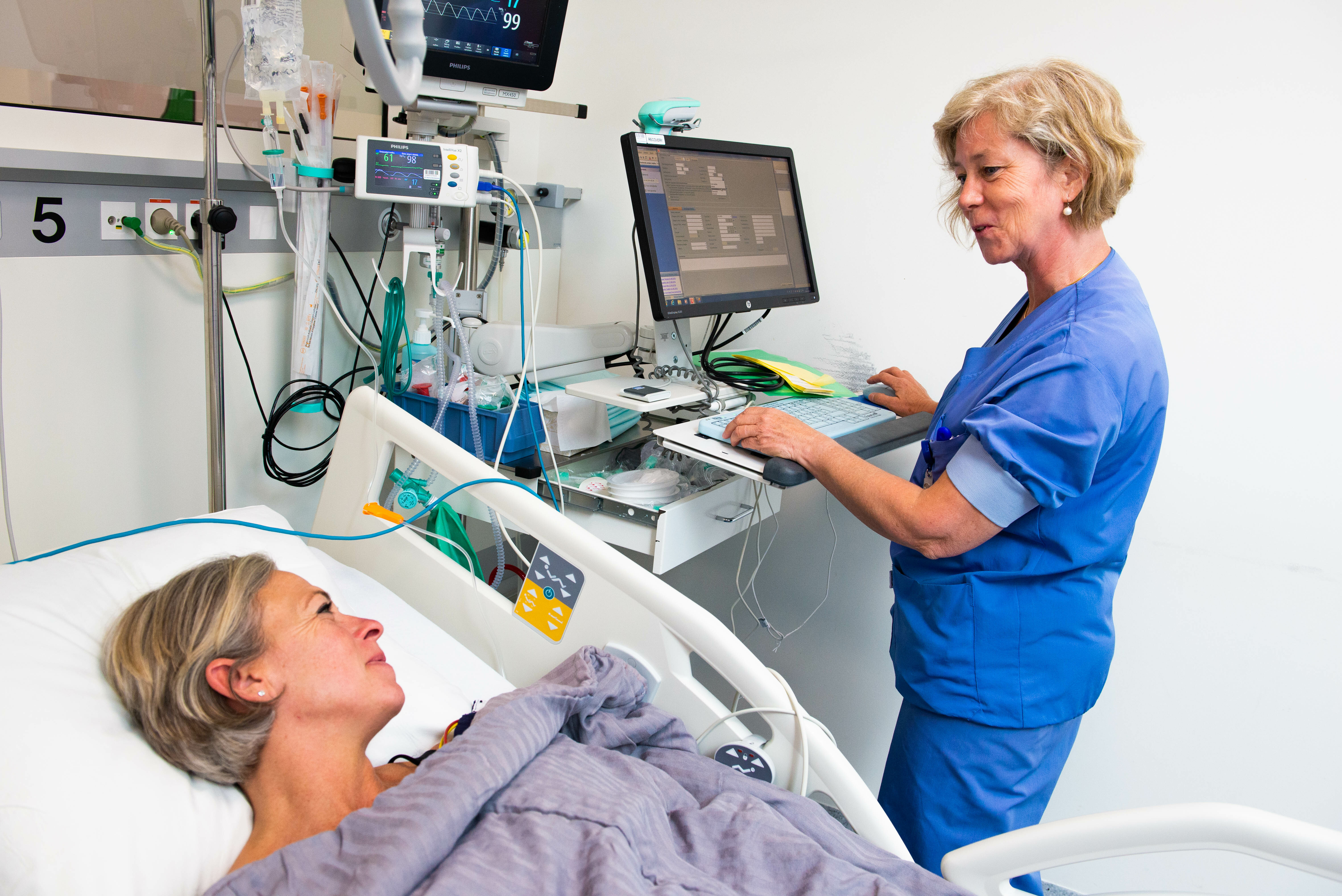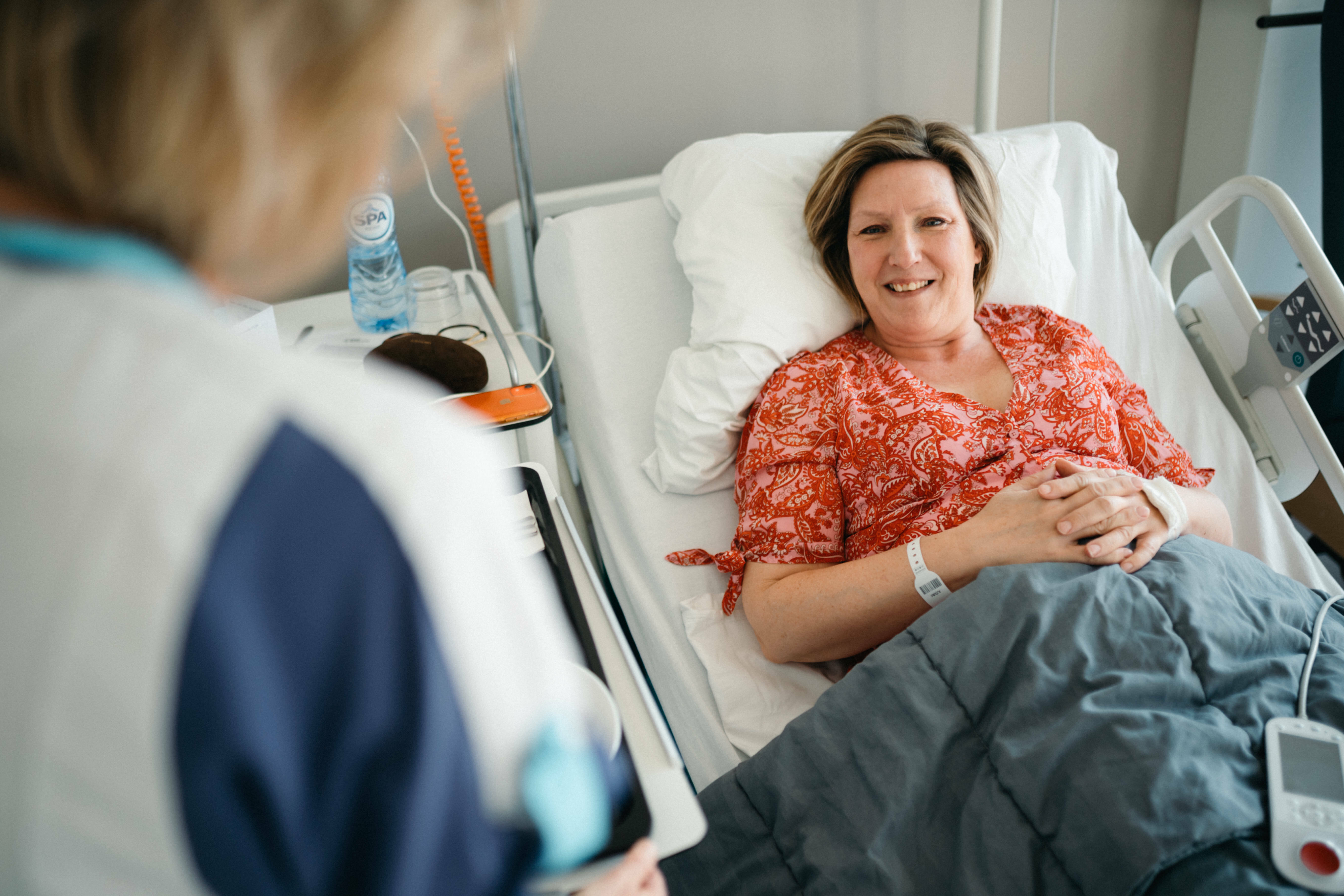After the operation
The awakening phase
The awakening phase
For general anaesthesia, the administration of medication is stopped just before or after the end of the surgical procedure. The medication gradually wears off and then you wake up. You will barely be aware of this while lying in the recovery room bed.
This situation may be disconcerting. Please know that a nurse is always close by. You will still be connected to a monitor at that time to measure your blood pressure and other parameters at regular intervals.
For your own safety, the side rails of your bed will always be raised.
Effects of partial anaesthesia
Effects of partial anaesthesiaWith partial anaesthesia, it is completely normal for the numbed area to remain numb for quite a while. In many cases, mobility in this area or of the extremity is also quite reduced. This type of anaesthesia wears off gradually, and you will regain mobility as well as sensation.
To your room
To your room
You will leave the recovery room as soon as you meet the parameters and your pain is sufficiently under control. The department nurses will check regularly to see if you have questions and to make sure your pain is well managed.
You will, of course, be able to leave the recovery room more quickly after a knee keyhole surgery free of complications than after an abdominal surgery (which we need to monitor for a longer time to make sure there is no bleeding, and to make sure the patient is able to urinate).
Procedure or examination with a short stay
Procedure or examination with a short stayAt Maria Middelares General Hospital, there is the possibility of being taken to the discharge lounge soon after your surgery or examination. That way you can get home faster. If this is possible for you, your physician will discuss this with you beforehand.
After the procedure or examination, you can wake up in 'your booth' in privacy. The nurse will follow your parameters and give you a glass of water when you wake up. You can also get dressed again within the hour in the booth. After approval from the supervising nurse, you will go to the discharge lounge for drinks and refreshments. If no follow-up discussion is needed, you can go home. The nurse will provide the necessary discharge papers. In the discharge lounge, you can wait for your accompanying person, if necessary.
Pain relief
Pain reliefProcedures or operations usually cause patients some sort of pain. Being completely pain-free after surgery is exceptional. Our goal is to consult with you to suppress the pain to a level that is tolerable to you so that you can feel comfortable. In any case, we provide baseline pain medication that is routinely administered.
To evaluate whether or not this is sufficient for you, you will be regularly asked to rate the pain you are having at that moment. We use this score to determine which supplemental pain treatment is the most appropriate for you.
Too little supplemental pain medication will not adequately suppress the pain; too much pain medication may cause drowsiness or nausea. This is why it is important to rate your pain as accurately as possible.
A physician or nurse will ask you to give a score from 0 and 10, where 0 means that you do not have any pain at all and 10 means that you have the worst possible pain imaginable.
If you indicate a score between 0 and 3, you will not be given any additional pain medication. Should your pain increase after we have asked you to rate it, you may always contact the nurse to ask for additional pain medication.
A score of 4 or higher: the prescribed pain medication will be administered. In the recovery room, your pain medication will be increased until you are pain free. On the ward where you will stay afterwards, your pain will be reassessed one hour after the pain medication has been administered.
If you begin with a score of 7 or higher, a stronger class of pain medication will be started immediately, which carries a somewhat greater risk of subsequent drowsiness and nausea (if nausea occurs, additional medication will be administered to suppress it)
For some procedures, usually major surgeries, we place a pain pump during or immediately after the procedure. If this could benefit you, you will receive more information before your operation.
Possible side effects
Possible side effectsModern anaesthesia is very safe. We always have completely prepared anaesthesia equipment and extensive monitoring on hand to monitor your health status.
during sedation The medication used for your anaesthesia is quite advanced and is always tested extensively. We only use safe and approved anaesthesia techniques and medication. Nevertheless, we can never rule out all risks with anaesthesia.
An overview of the side effects and/or complications is provided in the leaflet ‘Finding out more about anaesthesia'.
Centres and specialist areas
Centres and specialist areasLatest publication date: 16/05/2024


